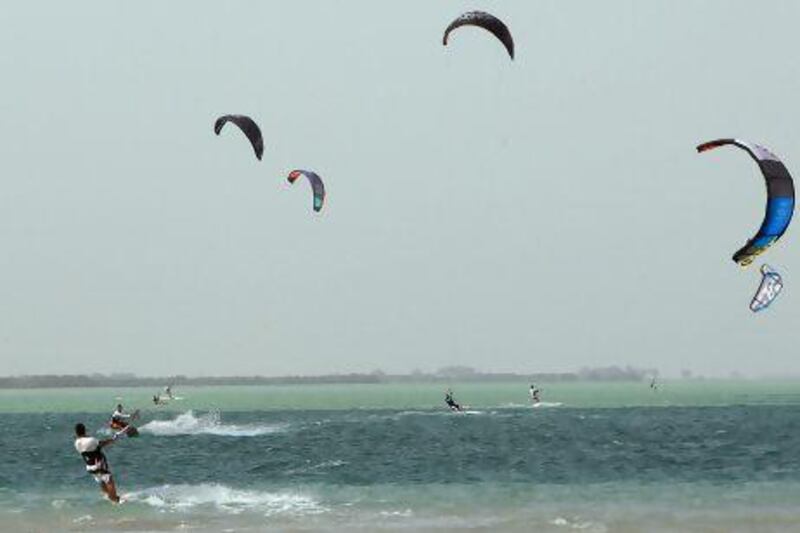ABU DHABI // New recommendations to better regulate kiteboarding could be approved in the next few weeks.
Designed to protect riders and the public alike, the regulations are aimed at ensuring a safe environment for all water-users.
Under the proposed system, instructors would earn an accreditation to show they have the necessary insurance, qualifications and skills to teach fledgling riders how to safely enjoy the sport.
“For years you could do whatever you want and fortunately nothing major happened in kiteboarding,” said Taimeir Abdelrazek, acting chairman of the Emirates Kiteboarding Association (EKA), himself an active kiteboarder.
“Now it is getting too crowded, there are too many people and there is not enough space for kiteboarders and swimmers, so we need to have defined regulations and rules to be able to maintain a certain standard.
“I don’t think we can prevent accidents, but we can minimise them by educating people,” he said. Mr Abdelrazek added that the majority of kiteboarders were well trained and did not pose a significant risk, but there were always “cowboys”.
“The UAE Sailing and Rowing Federation [Sarf] approached us and asked us to create a system for these sports to increase the level of safety,” he explained.
Many kiteboarders head to Abu Dhabi’s Yas Island, where dozens of kites can often be seen above the water.
There are significant hazards, such as the high voltage power lines that sit along many of the emirate’s coastlines.
The EKA have posted a number of maps showing riders and instructors the safest areas for the sport, free from power lines or heavy water traffic.
Although there have been no serious injuries or deaths reported as a consequence of kitesurfing in the country, regulators say that unless the rules are put in place, one bad incident could spell the end for the sport.
Reinier D’Arnaud, technical coordinator at Sarf, said the aim was not to discourage people from enjoying kitesurfing responsibly, adding that the federation was willing to work with all involved.
“We need to find a solution for everyone – so we are still in the process of developing the exact procedures. But the ideas are there now and we are working on implementing the rules to enable everyone to kitesurf.”
He stressed that Sarf was not looking to profit financially from the new system, and that the relevant documentation could be obtained very cheaply. Clarity was needed to ensure safety, he said.
ksinclair@thenational.ae






